Running out of horseradish can be frustrating, especially when you want to use it in a specific cuisine or dish like a Passover Seder plate or as a delicious homemade sauce called khrenovina sauce. Thankfully, there are still a few substitutes out there that can give you a similar flavor and texture.
As someone who also enjoys cooking with horseradish, I’ve found a few of these horseradish substitutes that work well in different recipes. With so many options and combinations available, I’ll be walking you through each type of substitute for horseradish that’ll best suit you. But first, let’s look at what exactly it is.
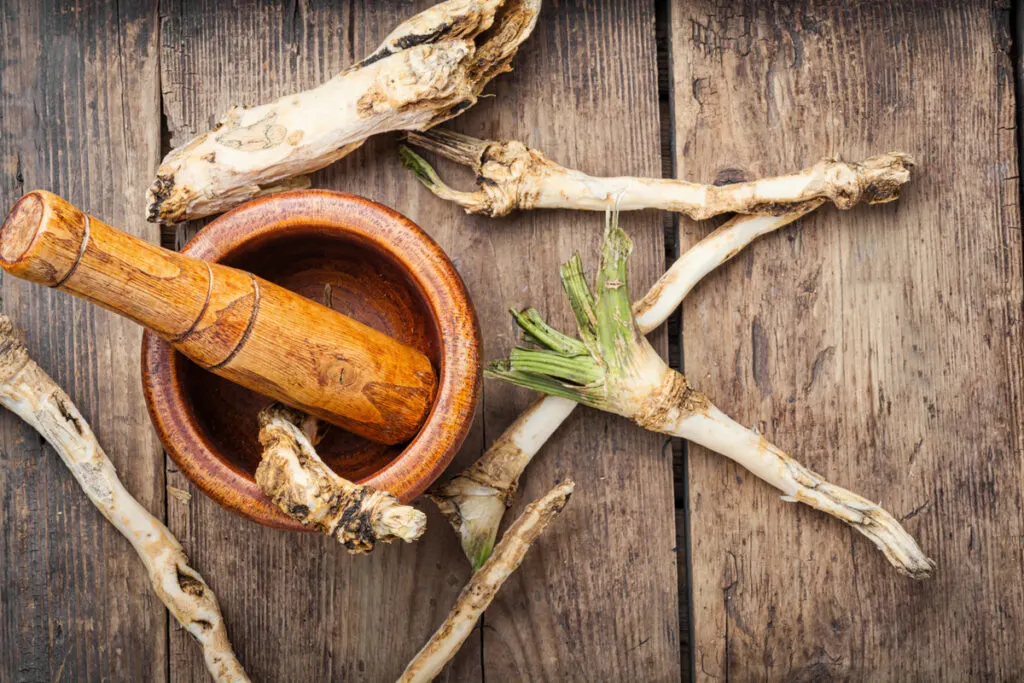
Jump To
What is Horseradish
Horseradish is a root vegetable with a pungent and spicy flavor and also an earthy and slightly sweet taste. The root can be grated or finely chopped and mixed with vinegar to make horseradish sauce. The heat of horseradish comes from the compound called allyl isothiocyanate, which is released when the root is grated or chopped.
It has a long history of use in traditional medicine, particularly for its antibacterial and anti-inflammatory properties. The root also finds use in Eastern European cuisine and in certain Asian sauces. The root can be used as a substitute for wasabi, which is more expensive and harder to find.
How to Make Horseradish Sauce
To make horseradish sauce, peel and grate the horseradish root. Be careful not to inhale the fumes as they can be quite strong. You can use a food processor or a grater to do this. Next, mix the grated horseradish root with vinegar, salt, and sugar in a bowl.
You can adjust the amount of salt and sugar to your liking. Then, transfer the mixture into a jar and let it sit for a few days. This will allow the flavors to meld together and mellow out the sharpness of the horseradish. After a few days, strain the mixture through a fine-mesh sieve to remove any solids. You can then store it in the refrigerator for up to a month.
How to use Horseradish
You can use this root vegetable in some fantastic dishes and meat to create a truly exceptional experience.
- Grate and serve fresh with meats or fish.
- Mix grated horseradish with sour cream or mayonnaise for a creamy sauce or spread.
- Combine with vinegar and sugar to make prepared horseradish.
- Use in cocktails like the Bloody Mary.
- Add to marinades for an extra kick.
- Mix with mustard for a spicy condiment.
- Pair with roast beef or smoked salmon.
- Use as a base for salad dressings or dips.
- Add to mashed potatoes for a flavorful twist.
- Experiment with other recipes to enhance flavors and heat.
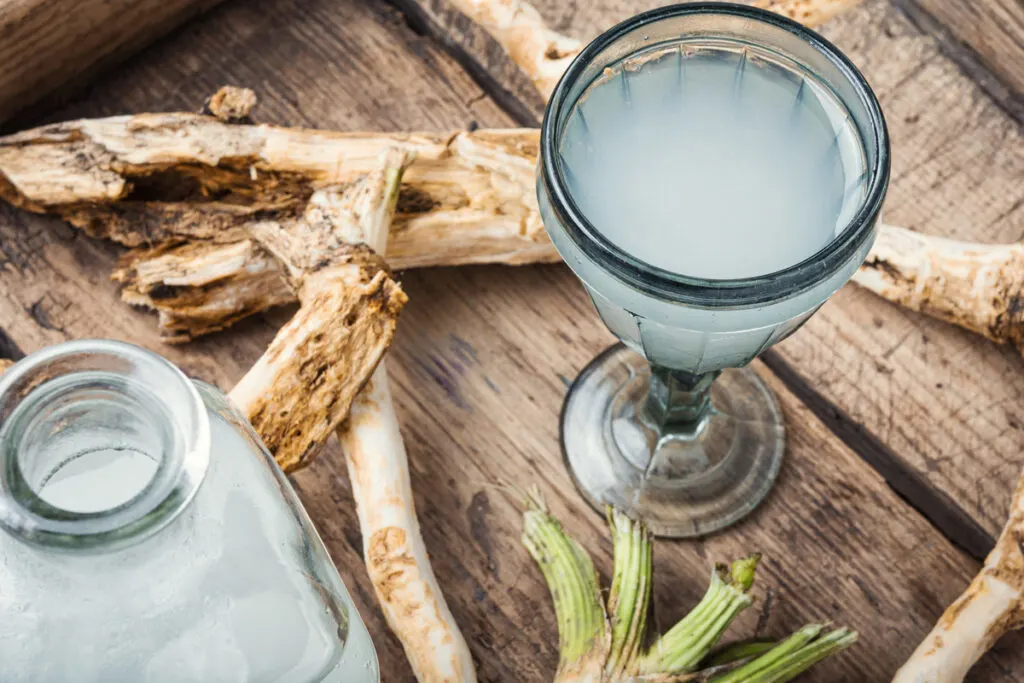
Best Substitute for Horseradish
Mustard
1 teaspoon of grated horseradish = 1 teaspoon of mustard
Mustard is a popular and relatively inexpensive condiment that can be the perfect substitute for horseradish in tons of recipes. Even though both condiments have a pungent flavor that can add a zesty kick to your dishes, they have different tastes.
While mustard has a tangy flavor, horseradish has a sharp, spicy taste. So, when choosing a mustard to use, look for a variety that has a strong flavor and a bit of heat. Dijon mustard, whole grain mustard, and spicy brown mustard are all good options. These types of mustard have a more pronounced flavor that can help mimic the taste of horseradish.
Wasabi Paste
1 teaspoon of grated horseradish = 1/2 teaspoon of wasabi paste
Wasabi paste is an excellent substitute with a similar flavor, spiciness, and zesty kick that’s iconic to horseradish. However, it does have a stronger, unique taste that differs from horseradish. Yet despite this, it can still provide a similar level of heat and flavor to your dishes. Using it sparingly is best, as a little goes a long way. Start with a small amount and add more as needed.
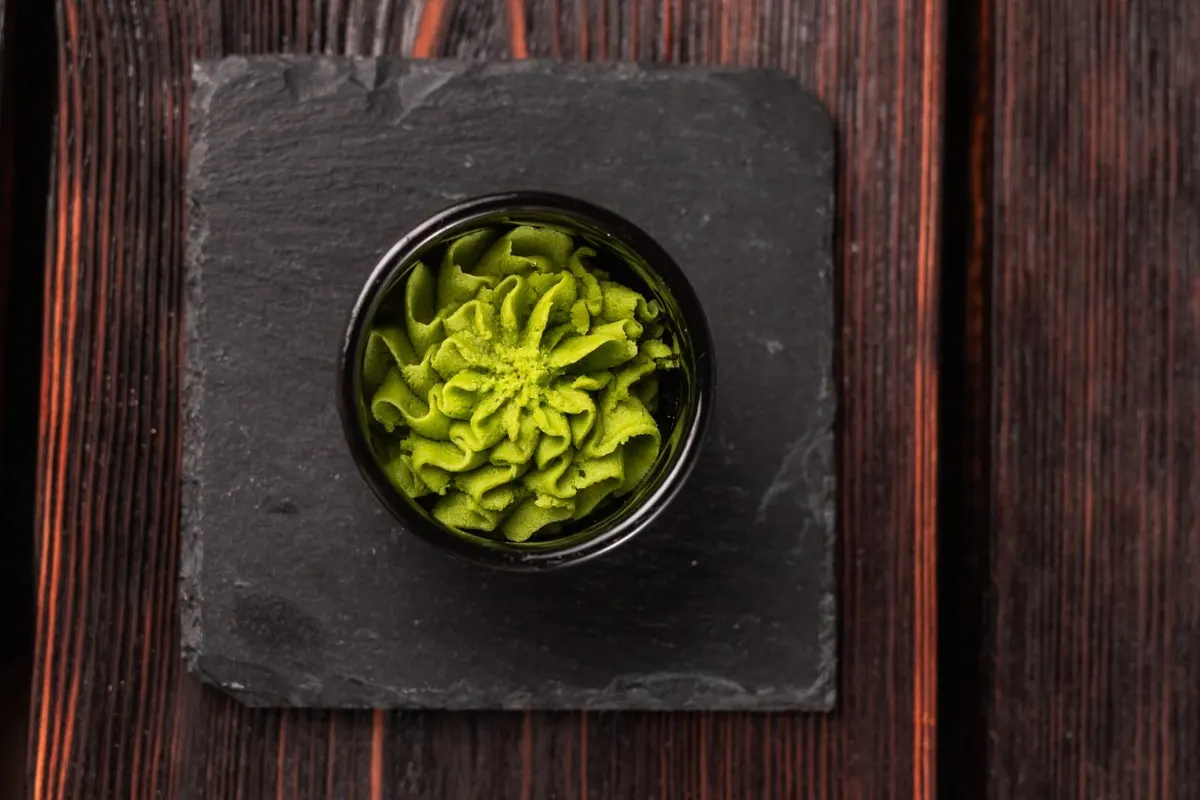
Wasabi Oil
1 teaspoon of grated horseradish = 2 teaspoons of wasabi oil
Wasabi oil can be a great substitute for adding a spicy and zesty flavor to your dishes. It has a unique taste of its own but can still provide a similar level of spiciness as a certain root.
This oil can be a versatile ingredient, adding a distinct flavor and spiciness to your favorite recipes that are perfect for those who enjoy bold and flavorful dishes. But it’s best to start with a small amount and adjust as needed if you have a specific heat level in mind.
Wasabi Root
1 teaspoon of grated horseradish = 1 and 1/2 teaspoons of fresh grated wasabi root
If you want a flavorful and spicy kick to your dishes, consider using wasabi root as a substitute. Its knobby, gnarled root is the source of its intense heat, similar to horseradish, owed to compounds that stimulate the senses. It also has a similar texture and taste profile with a pungent and spicy flavor. Although it has a distinct taste of its own, wasabi root can still provide a very similar level of heat and flavor to your dishes.
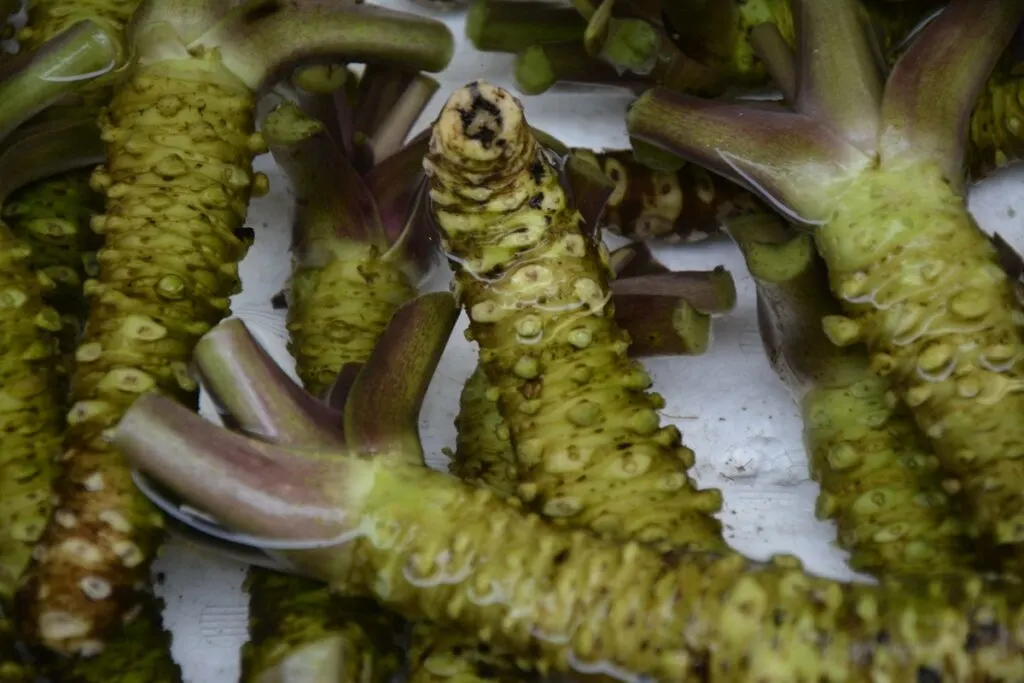
Wasabi Powder
Mix 2 teaspoons of wasabi powder + 1 teaspoon of water
1 teaspoon of grated horseradish = 1 teaspoon of mixed wasabi powder
Wasabi powder and wasabi oil have a similar flavor profile, but their preparation methods make them different. Wasabi oil is created by mixing wasabi powder with oil, which can weaken the spiciness and flavor of the powder.
So, if you want a more intense flavor and heat, using just wasabi powder is a better option. It allows you to adjust the level of spiciness and flavor intensity according to your preferences, making it perfect for dishes such as marinades, dressings, and dips. It can also be used as a seasoning for roasted vegetables or as a condiment for sandwiches and burgers.
Ginger
1 teaspoon of grated horseradish = 1 teaspoon of grated ginger
Ginger is a widely used spice that can be a great substitute for horseradish, as it has a similarly pungent and spicy flavor that can be used to add a kick to any dish. It’s also known for its potential health benefits, such as aiding digestion, reducing inflammation, and boosting the immune system. However, these benefits are not scientifically proven and should not be used as a replacement for medical treatment.
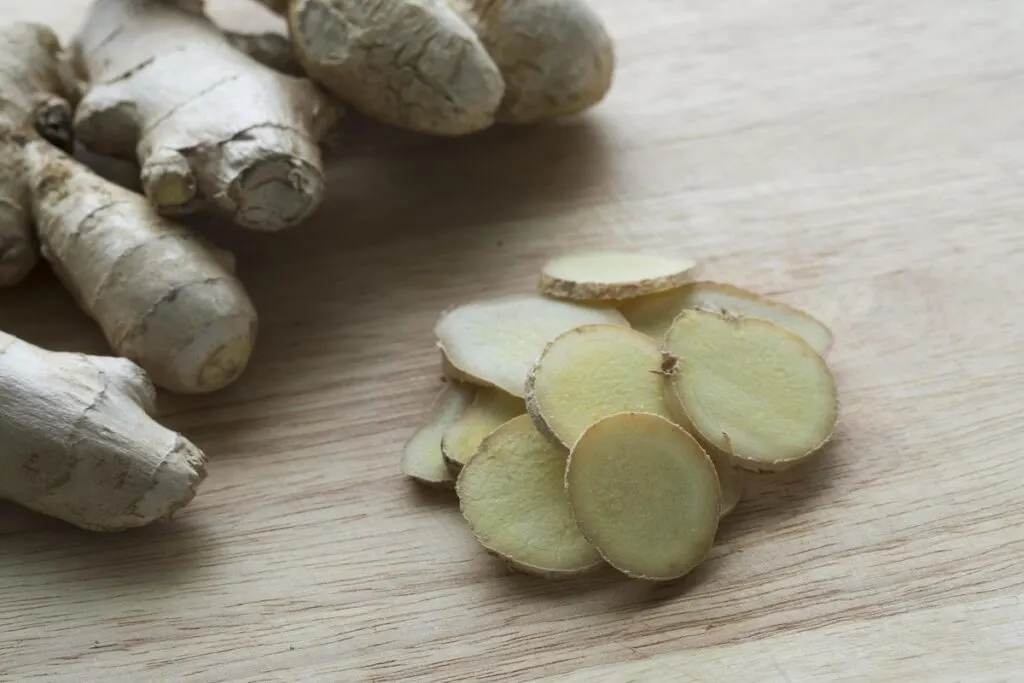
Daikon
1 teaspoon of grated horseradish = 1 teaspoon of chopped daikon
Daikon, also known as white radish, is a root vegetable that’s commonly used in Japanese and Korean cuisine. It has a mild and crunchy texture with a similar pungent flavor.
While it may not be as spicy as horseradish, it still has a distinct taste that can add a rich depth of flavor to sushi, salads, and stir-fries. It can also be grated and mixed with soy sauce and wasabi to make a dipping sauce for sushi, or it can be sliced thinly and added to salads for a crunchy texture.
On top of its flavor, daikon is also a great source of vitamin C and potassium. Its low calories and high fiber content also make it a healthy addition to any meal.
Sauerkraut
1 teaspoon of grated horseradish = 3 or 4 teaspoons of sauerkraut
Sauerkraut can be a great option if you’re looking for a tangy and slightly sour flavor. It’s a fermented cabbage dish commonly used in German cuisine and an excellent source of probiotics, which can help promote good gut health.
It can be added to soups, stews, casseroles, and salads and even used as a filling for pierogies or as a topping for pizza, hot dogs, burgers, and sausages. To use sauerkraut, simply chop it up finely and mix it with some mustard. This mixture can be used as a spread on sandwiches or as a dip for your favorite snacks.
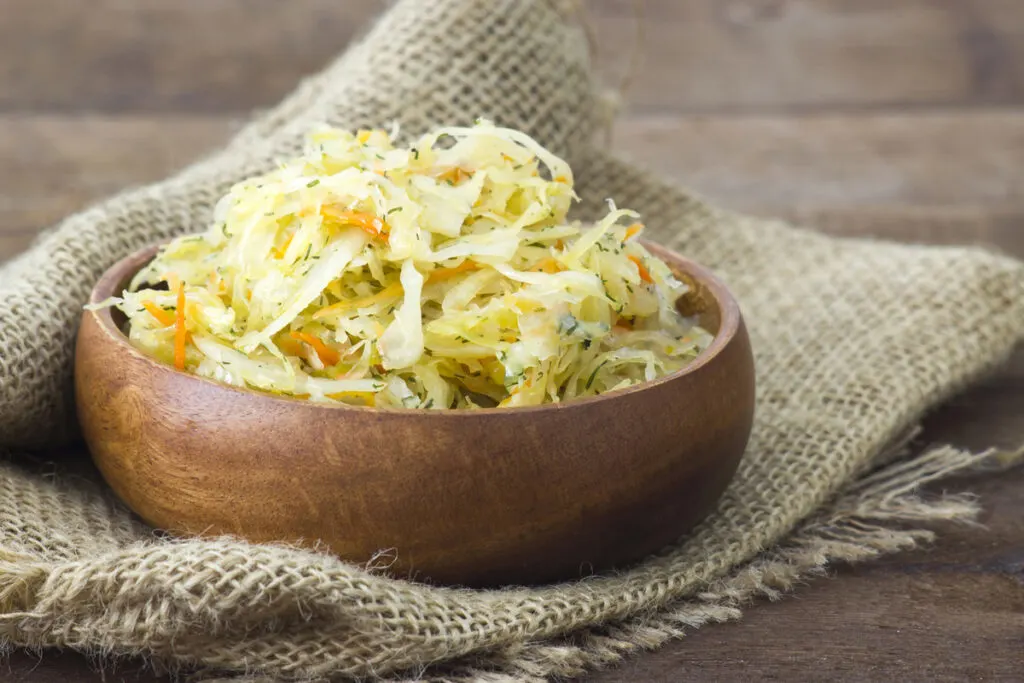
Black Radish
1 teaspoon of grated horseradish = 1 teaspoon of chopped black radish
Black radish is a great and unique ingredient to use as a substitute when you want to add a spicy and earthy flavor to your dishes. It has a distinctive taste of its own but can still provide a similar level of heat as a horseradish root in your favorite recipes, such as soups, stews, casseroles, and roasted dishes.
It can also be used as a side dish or a topping for salads. To use black radish as a substitute, peel and grate it finely before adding it to your recipe.
Spicy Hot Mustard
1 teaspoon of grated horseradish = 1 teaspoon of spicy hot mustard
Spicy hot mustard can add a similar level of heat and a zesty kick to your recipes. Crafted from mustard seeds, vinegar, and spices, it delivers a potent blend of heat and flavor. Although it has a different flavor, it can still provide a similar level of spiciness as horseradish.
If you wanna use this mustard, start with a small amount and adjust as needed to achieve the desired level of heat in your dish.
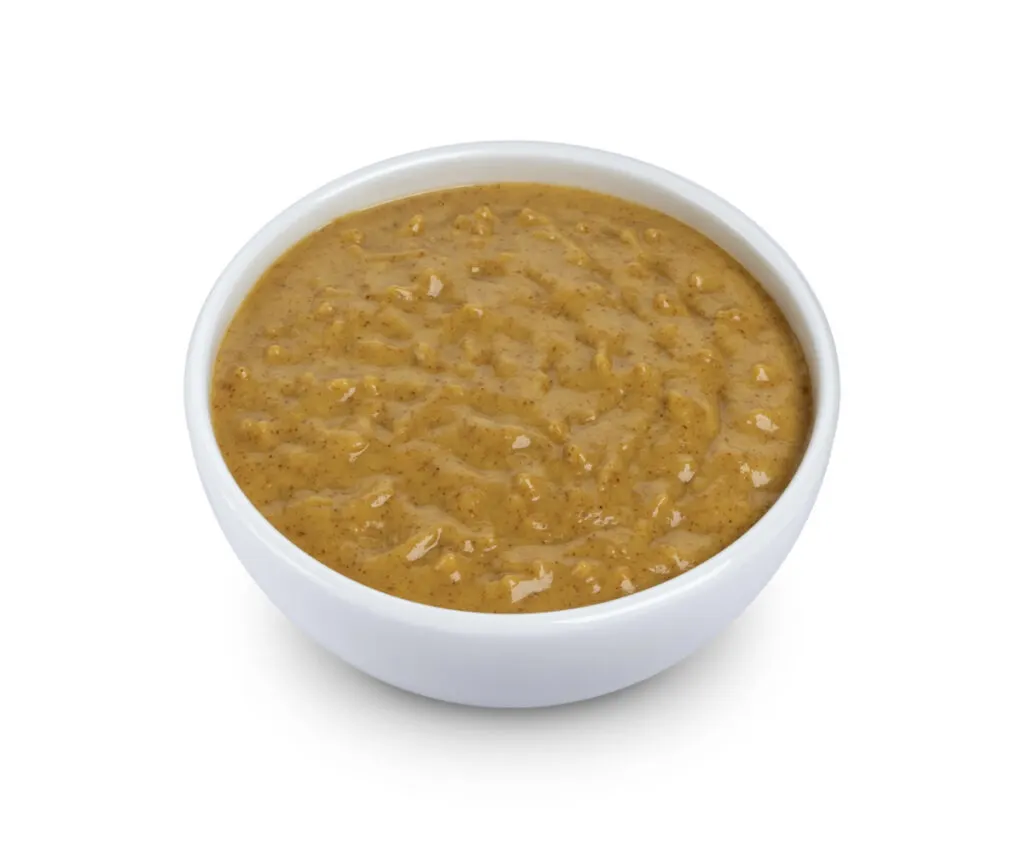
Ground (Brown) Mustard Powder
1 teaspoon of grated horseradish = 1/2 teaspoon of ground (brown) mustard powder
Ground (brown) mustard powder can add a bold and distinctive flavor to your dishes with a kick of flavor that’ll also provide a similar heat level as horseradish. You can use ground mustard powder in various dishes, such as dressings, marinades, and sauces.
It can also be used as a seasoning for roasted vegetables or a condiment for sandwiches and burgers. With its versatility and bold flavor, ground mustard powder is an excellent ingredient to experiment with and take your cooking to the next level.
Prepared Horseradish
1 teaspoon of grated horseradish = 1-4 teaspoons of prepared horseradish
Prepared horseradish is the prepared version of its counterpart. Although it may not technically be a substitute for horseradish since it uses the same root, it can still be a worthwhile alternative to consider. It’s made by grating the horseradish root and mixing it with vinegar and salt to create a pungent and spicy condiment.
Prepared horseradish can even be used as a substitute for fresh horseradish in many recipes, as it has a similar level of heat and zesty flavor. Some of these dishes can range from creamy dips to marinades for meats and veggies. You can also mix creamy dips with sour cream or Greek yogurt for a tangy, spicy dip that pairs well with veggies or chips.
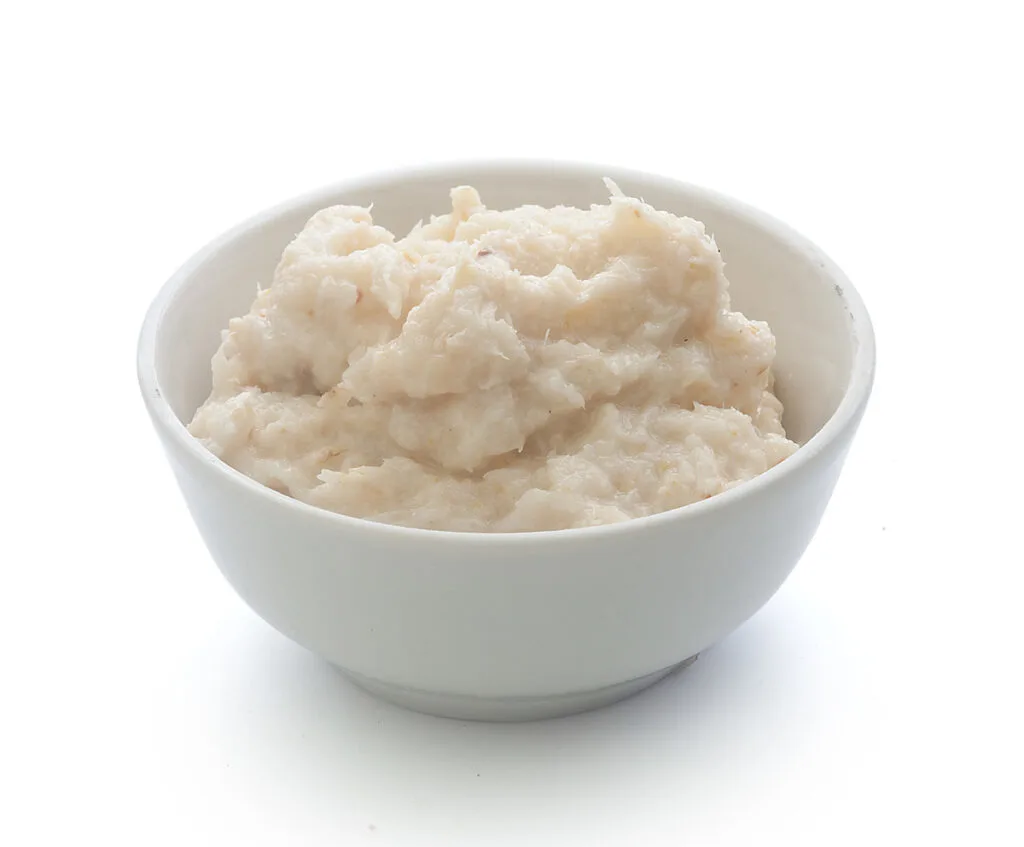
Parsnips
1 teaspoon of grated horseradish = 1-2 teaspoons of chopped parsnips
Parsnips can be a great substitute for adding a spicy and earthy flavor to your dishes. Although it has a different taste profile than a certain root, it can still provide a similar level of heat. When using parsnips as a substitute, it’s best to peel them and grate them finely before adding them to your recipe.
FAQS
What does horseradish taste like?
Horseradish has a pungent, spicy flavor that is often described as similar to mustard or wasabi. It has a sharp, biting taste that can be quite intense, especially when eaten raw or freshly grated.
Why is it called horseradish?
The “horse” part of the name is thought to come from the fact that horses were traditionally used to grind the root into a paste, as their strong jaws and teeth were well-suited to the task.
What is horseradish sauce?
Horseradish sauce is a condiment made from grated horseradish root, vinegar, and other ingredients such as mayonnaise or sour cream. It has a creamy texture and a tangy, spicy flavor that’s milder than raw horseradish.
